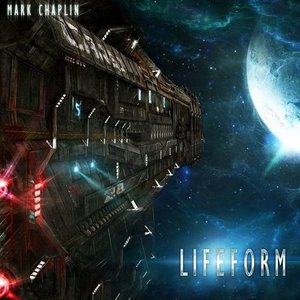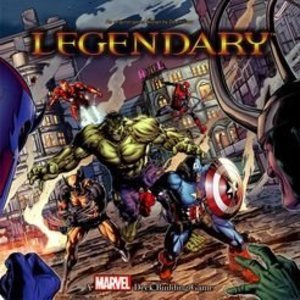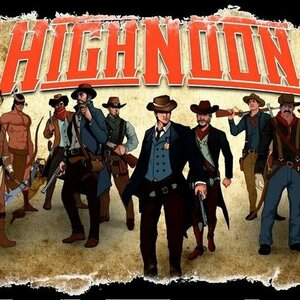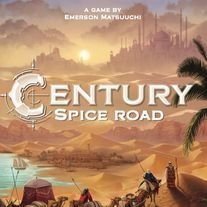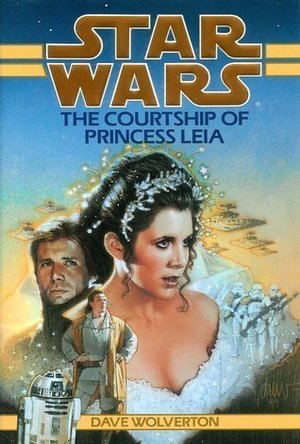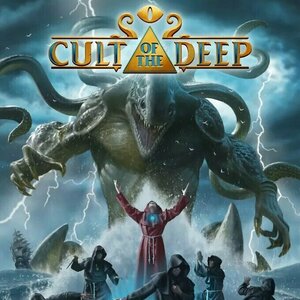
Cult of the Deep
Tabletop Game
You are a cultist, trying to establish your faction's rise to power. Fight over rituals and mythical...
Purple Phoenix Games (2266 KP) rated Legendary: A Marvel Deck Building Game in Tabletop Games
Sep 19, 2019
In an era where superheroes are the norm, the days of petty crime are over. As the protectors of our world have grown in power, so too have those who would see it fall to chaos. Out of the shadows comes a nefarious Mastermind who has engineered the most wicked evil scheme the world has ever seen. With an ever-growing band of followers and henchmen to carry out the plot, the future looks dismal. But do not fear – the supers are here! This job is way too big for only one single hero to handle, but if they all band together, then maybe, juuuust maybe, they might be able to pull it off…
DISCLAIMER: There are several expansions to this game, but we are not reviewing them at this time. Should we review them in the future we will either update this review or post a link to the new material here. -T
Set in the world of Marvel comics and, recently, the Marvel Cinematic Universe, Legendary: Marvel is a cooperative deck building game. Players take turns drafting and playing cards to recruit heroes to their team and to fight off the villains trying to carry out the sinister scheme. You have to strategize how you want to build your deck to best complete the mission – do you recruit heroes that give you special abilities (like drawing additional cards), or do you recruit strong heroes that give you lots of attack points? The choice is entirely up to you! Although all players are building their own individual decks, you must also devise a team strategy because all players either win or lose together as a team. That being said, there is a small competitive aspect to this game – the player with the most Victory Points (earned by defeating villains and rescuing bystanders) is deemed the most legendary hero of the game! Exactly how competitive the game gets is up to the players. I personally prefer a more cooperative approach and usually don’t tally up VPs at the end of the game – either the team won or we lost.
The beauty of this game is that it can be played with any combination of Marvel characters – you are not limited to only using specific teams. Selecting which heroes/villains/Mastermind/etc. to use is at the discretion of the players. Want Iron Man to team up with Deadpool and Wolverine to fight off Kingpin? Go for it! You have basically the entire Marvel universe from which to choose, so the sky is the limit! With so many options, though, it can be a little overwhelming, so I usually use a randomizer app to create a setup for me. Sometimes the setup itself will determine how the entire game will play out – certain combinations of Mastermind/villains/scheme can be BRUTAL to play and difficult to win. But the cool thing about this game is that you cannot just look at a setup and tell if it will be difficult or not – that realization only will come once you start playing!
I love playing this game because of its immense variability – the base game alone has 500 cards! The ability to choose your own heroes, villains, Masterminds, and Schemes means that you will probably never play the same game twice. And on top of that, Legendary: Marvel currently has like 19 expansions! The possibilities are truly endless, and that is the Holy Grail for me when it comes to gaming. I know that I will never get bored of this game because it is a different experience every game.
On the flip side, my main grievance with Legendary: Marvel is with the physical setup and teardown. Every play uses SO MANY cards that it does take a decent amount of time to get setup or put away. Every individual hero/villain/Mastermind/etc. must be sorted and stored separately, and with 500+ cards, that time adds up. When deciding on a game to play, sometimes I skip Legendary: Marvel because of the time it takes to set up. I LOVE to play it, but sometimes I do not feel like taking that much time to set up – I just want to play! My other grievance deals with certain hero superpowers/special card text. Some hero cards have special text, and the definitions are outlined in the rule book but not on the cards themselves. Until I learned/memorized what that special text meant, I was constantly referring back to the rule book nearly every turn to make sure I was using the cards correctly. There is a bit of a learning curve with some of the hero text, but it does get better the more you play!
Don’t let the simplicity of the mechanics fool you – this game requires more strategy than meets the eye! You must not only decide on a strategy for building your individual deck, but you and your teammates must also collectively choose a group strategy to defeat the Mastermind. Cooperation is key, and it really helps the theme of the game come to life. Definitely a winner for Purple Phoenix Games with a butt-kicking 24 / 24 and a well-earned Golden Feather Award!
Purple Phoenix Games (2266 KP) rated High Noon in Tabletop Games
Mar 1, 2021
Disclaimer: We were provided with a copy of the game for the purposes of this preview. This is a finalized production copy, and the components you see pictured are those you will receive in your own game! Also, we were provided the 4-player starter set – the game is playable with more people when expansions are included. -L
High Noon is a game of action points, grid movement, and fighting, played over a series of 12 rounds, in which players take on the roles of various posses in the Wild West who are battling to collect the most gold in town. To setup for the game, each player selects a posse and receives their corresponding deck of cards, character sheets, and minis. Character sheets are placed in front of each player, and a red Poker Chip is placed on each to track the Health of each character. Setup the map tiles as shown in the rulebook, or players may create their own map layout using at least 7 of the map tiles. Shuffle the Loot decks and place them to the side within reach of all players, and create a pool of Gold tokens and Poker Chips. The Loot Crate tokens are shuffled and randomly placed on the green squares of the board, and then players will take turns each placing 3 more Loot Crates following certain placement restrictions. All minis are placed on their starting squares on the map tiles, players draw 6 cards from their own posse decks, a starting player is selected, and the game is ready to begin!
Each turn is broken into 3 phases: Movement, Action, and Draw Cards. During the Movement phase, players may move any/all of their minis on the map up to the Speed value listed on their respective Character Sheets. Movement is always in straight lines, or can be diagonal. Diagonal movement costs 2 squares of movement though, so keep that in mind! The map tiles have various obstacles as well, and navigating over obstacles costs 2 squares of movement as well. After a player has moved their minis, they now move to the Action phase. In this phase, each individual character of your posse is allowed one action: Play a Card, Loot a Crate, Loot a Body, Equip an Item, Pass an Item, or Drop an Item. To Play a Card, select a card from your hand, perform the action listed on it (either an Attack or Special Action), and discard it. It is important to note that a character may only ‘Play a Card’ if you have one of their cards in your hand! Each posse deck is made up of action cards for the various posse members – so you might not always have a card in hand for every character. In order to Loot a Crate or Loot a Body, your mini must be in an adjacent square to the item to pick it up. Any Loot that is picked up is placed with the corresponding character’s Character Sheet – each character may only hold a specific amount of Loot! Certain Loot items need to be equipped, and thus you may make that character equip an item in lieu of any other actions this turn. Loot cards have various uses: Weapons, Consumables, or Ammunition. These can provide extra Attack damage, Healing powers, or Defense bonuses to characters. Loot is highly coveted!
Passing an Item allows you to hand off Loot between posse members, or Dropping an Item (a free action) removes that Loot from your Character and is discarded. After all of your characters have acted (if possible), your turn then moves to the Draw Cards phase. You will draw 3 cards from your posse deck. Once you have 12 cards in hand, you must discard 3 cards in order to draw 3 cards. You must always draw 3 cards at the end of your turn. The game then proceeds to the next player, and continues as such until the end of 12 rounds. So how do you win? By collecting Gold, of course! And the way to do that is by attacking your rival posses. Any time one of your characters deals at least 1 point of damage to an opponent, you collect 1 Gold token. Any time you kill an opposing character (reducing their Health on their Character Sheet to 0), you collect the amount of Gold listed on the deceased character’s Character Sheet. At the end of 12 rounds, the player/posse that has amassed the most Gold is the winner!
Ok, so I know that seems like a lot, but I promise that the gameplay is pretty streamlined once you actually get going. The Movement phase is very straightforward and simple to perform. The Action phase is logical, and the options are clear. Drawing cards is a no-brainer at the end of your turn. The real nitty-gritty part of play is in the strategy. You earn Gold by dealing damage or killing opponents, so naturally Combat is where the crux of the gameplay is centered. All characters are armed with weapons that have finite range. You may only ever attack opponents who are in direct Line-of-Sight – in a straight line away from you, or diagonally, each square costing 2 squares of range. If an opponent is not in either of those 2 directions from your character, you may not attack them! So movement and character placement becomes a lot more strategic and important in gameplay. There is also the concept of obstacles impeding the attacks of players. It makes logical sense, and I feel like the damage adjustments to incorporate obstacles feel realistic. When a player is attacked, they may choose to play a card from their hand to defend against some of the damage being dealt. As mentioned above, though, a character may only ever play a card that is specified for him! (Ex. Col. Rodgers cannot defend if you have no Col. Rodgers cards in hand) Are you willing to risk your only Leroy Gang card to defend 2 points of damage instead of using it to attack for 3 points of damage on your turn? You have to figure out exactly how to play the combat, and that strategy can turn in the blink of an eye.
Honestly, for me, the trickiest part of the gameplay was keeping track of which character acted each turn. I ended up grabbing some of the extra Poker Chips and placing them on a Character Sheet once he had acted each turn. Not necessarily a knock on the game, just on my inability to control multiple characters I guess! Let me touch on components for a minute. The copy of the game that I received is a finalized production copy. There may be some updates to the rulebook, but component-wise, what you see is what you get. And what you get is pretty great. The posse and Loot decks are nice sturdy cards, and the cardboard chits (Poker Chips, Loot tokens, and Gold) are thick, if not a little too small for my taste. The Character Sheets are big, easy to read, and clear in their iconography. The map tiles are some nice thick card stock-like material that definitely will hold up to numerous plays. And the minis. They are so cool! Each posse has a designated color, and they are just fun to play with and move around the board. At first, I found it difficult to tell certain posse members apart, since some of the minis look alike. But then I realized that each mini has a number of nicks in the base to help players identify which mini corresponds to which character. That was definitely a lifesaver for me in my plays. The components make this feel like a luxury game, and that helps make it more exciting to play!
So all in all, how does High Noon fare? In my opinion, pretty well! The map grid and combat are reminiscent of Dungeons and Dragons, but with a Wild West theme that feels novel and unique. And according to the box, it can be played with more than 4 players if you incorporate expansions into the base game. So you can really turn this into an all-out Western showdown! The gameplay is smooth, the strategy ever-changing, and the concept and rules are fairly simple to learn and teach. High Noon definitely gets some high marks from me!

Battle Line
Tabletop Game
Two opponents face off across a 'battle line' and attempt to win the battle by taking 5 of 9 flags...
Boardgames CardGames 2playerGames KniziaGames
The Marinated Meeple (1853 KP) rated Century: Spice Road in Tabletop Games
Mar 14, 2018
David McK (3649 KP) rated The Courtship of Princess Leia (Star Wars) in Books
Jan 28, 2019
Han wins a planet (a freakin' planet!) I a card game??
The Hapes Consortium have a weapon called 'the gun of command' that robs someone of free will?
The Emperor - the man who oversaw the near-extinction of the Jedi - was afraid of a group of 'Force Witches' on a third-rate planet?
Rancors are (semi)intelligent?
If this had been the first Star Wars EU book instead of Zahn's <I>Heir to the Empire</I> series, I doubt the EU franchise as a whole would be as popular as it is.

Brawling Brothers Boardgaming Podcast
Podcast
The Brawling Brothers Boardgaming Podcast is a biweekly podcast that focuses on board games, card...
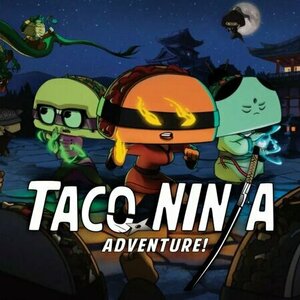
Taco Ninja Adventure
Tabletop Game
Taco Ninja Adventure is a card game for 2-6 players created by Turn Sideways Games. Players are...

The Seals of Cthulhu
Tabletop Game
A quick-playing yet very strategic bidding and bluffing card game, set within a Cthulian universe,...
